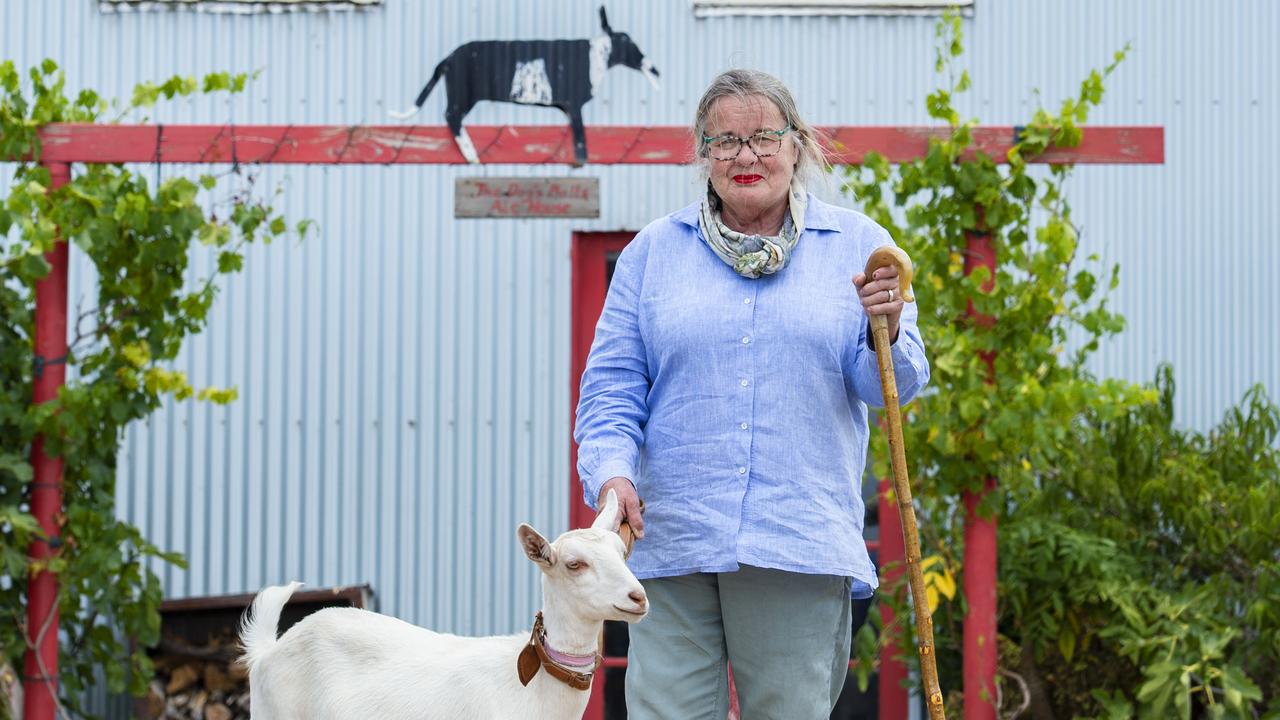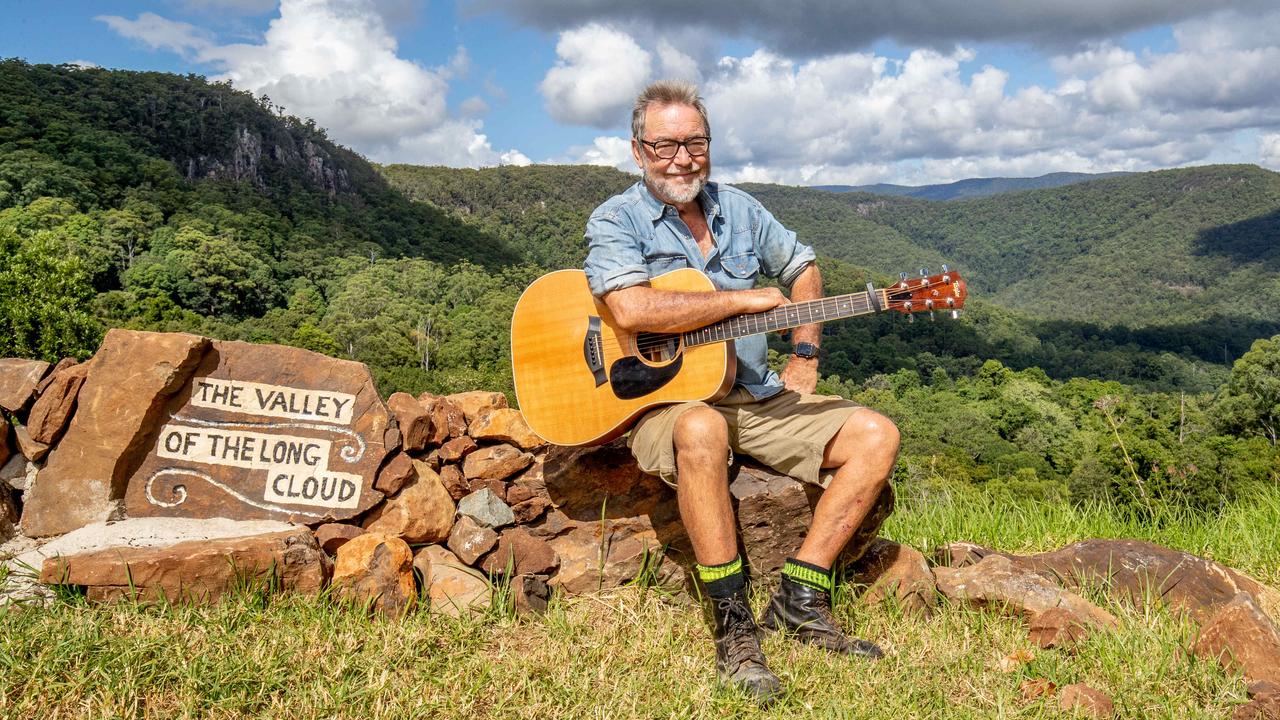The Environmental Cowboy, Khory Hancock, is making carbon farming sexy
KHORY Hancock could quite possibly be the first person on the planet to make carbon farming sexy.

KHORY Hancock could quite possibly be the first person on the planet to make carbon farming sexy.
The handsome and rugged 29-year-old environmental scientist — who grew up on a cattle farm in central Queensland — says he called himself the somewhat self-mocking title of the Environmental Cowboy as a way to cut through a dry subject.
“What I talk about is boring to most people and so giving myself that persona of the Environmental Cowboy is a way to make it interesting, entertaining and fun,” Khory says.

“I’m a country lad at heart, but I’m no cowboy. I don’t ride in rodeos, but I want to draw attention to a serious topic while poking a bit of fun at myself.
“Some of my colleagues once wanted to put forward my name for the Batchelor Australia (TV show) to increase my profile, but I think that’s doing it in the wrong way.”
As the Environmental Cowboy, Khory — who in 2014 completed a leadership program with climate advocate Al Gore — has created a YouTube channel, speaks frequently at public events, has worked with the Discovery Channel and this year released his first documentary, The Environmental Cowboy, to promote carbon farming as a solution to climate change.
The 37-minute documentary follows him as he takes city youngsters on a 6000km journey from his home farm in Carnarvon Gorge, through central Queensland to the Great Barrier Reef, highlighting what he sees as the key solution.
“Carbon farming is a way to make massive emissions reductions while looking after farms by growing trees and not clearing the land, which increases soil fertility and reduces erosion,” he says.
“I’ve seen carbon farming do a lot of good things through Queensland.
“Stations that have had to de-stock cattle and sheep because of the drought have saved their properties because of the financial incentives offered by the Federal Government.
“I honestly believe rural suicide has declined because carbon farming allows farmers to give the land a rest while finances continue to come through.
“Last year 90 per cent of Queensland was drought-declared, which is a historical record. It’s tough out there and the land is degrading and desertifying, with drought-prone areas more drought-prone, and farmers are selling up and moving east.”
Geoff Dunsdon runs a 40,500ha cattle station in the southwest Queensland outback town of Cunnamulla and says carbon farming saved his farm.
“I certainly support the concept and the work Khory is doing,” the 65-year-old says. “It’s a different management strategy and in these dry times it gives us an income we wouldn’t otherwise have. The area around here is buggered. We haven’t had decent rain in years.
“I’ve been carbon farming for two years and normally we’d push mulga trees over and feed stock, but under carbon farming we can’t push them over and so instead have to reduce stock numbers.”

Khory has just started another two-year documentary project, this one showing how farming seaweed for cattle feed can reduce methane emissions, for which Meat and Livestock Australia has been conducting trials.
He hopes to sell this next documentary to Netflix or the Discovery Channel and enter into short-film competitions.
“Seaweed farming is a profitable solution to climate change that doesn’t rely on Government funding,” he says.
Khory self-funds the documentaries — the first cost about $30,000 — so he works full-time as an environmental scientist, where he sees opportunities to reframe the whole climate discussion.
He grew up on the 12,140ha Brahman-Charolais cross cattle property, bought by his father Lloyd — who was Queenslander of the year in 2001 — in the early ’90s to run a not-for-profit charity to connect young people to the bush.
It was here Khory’s dedication to the environment first took hold.
“I spent a lot of time in a creek that ran through the farm and even as an eight-year-old I had a science journal where I’d name all the birds and animals I’d see, including their scientific names.
“As the droughts got worse those animals didn’t appear any more.”

He was schooled by distance education and moved to Roma for secondary college, then completed a double degree in environmental science and planning.
For the next decade Khory worked as a project officer in land rehabilitation for coal mining companies, for the agricultural sector in carbon farming, as well as implementing carbon-neutral plans for the transport sector.
“I’m not a hypocrite. I still switch on lights and don’t use renewable energy,” he says.
“I’m not sitting here saying mining, transport or agriculture is the problem, but having grown up and worked in these sectors I can see both sides to the issue. When I know better, I can do better.
“We are the problem. We each have to take responsibility. We are all part of the system and we have got to stop blaming each other or someone else and have to take ownership for our own actions, to change the culture and shift the focus.”
He says it was taking part in Al Gore’s three-day climate reality project in 2014 — a leadership program he is helping to bring to Australia next year — that he realised “I wasn’t a climate advocate so much as a visionary or a strategist” and that documentaries were a way to get the message out.
Khory does not promote small household actions like switching off lights, but instead encourages each individual to lobby their employer to offset carbon.
“Rather than doing minuscule actions in your home, it’s industry that will influence government which will have the biggest impact.
“Whether you’re a CEO or at the admin level, take responsibility in your own industry.
“Start putting pressure on your own company to reduce their impact and create carbon neutral plans.”


